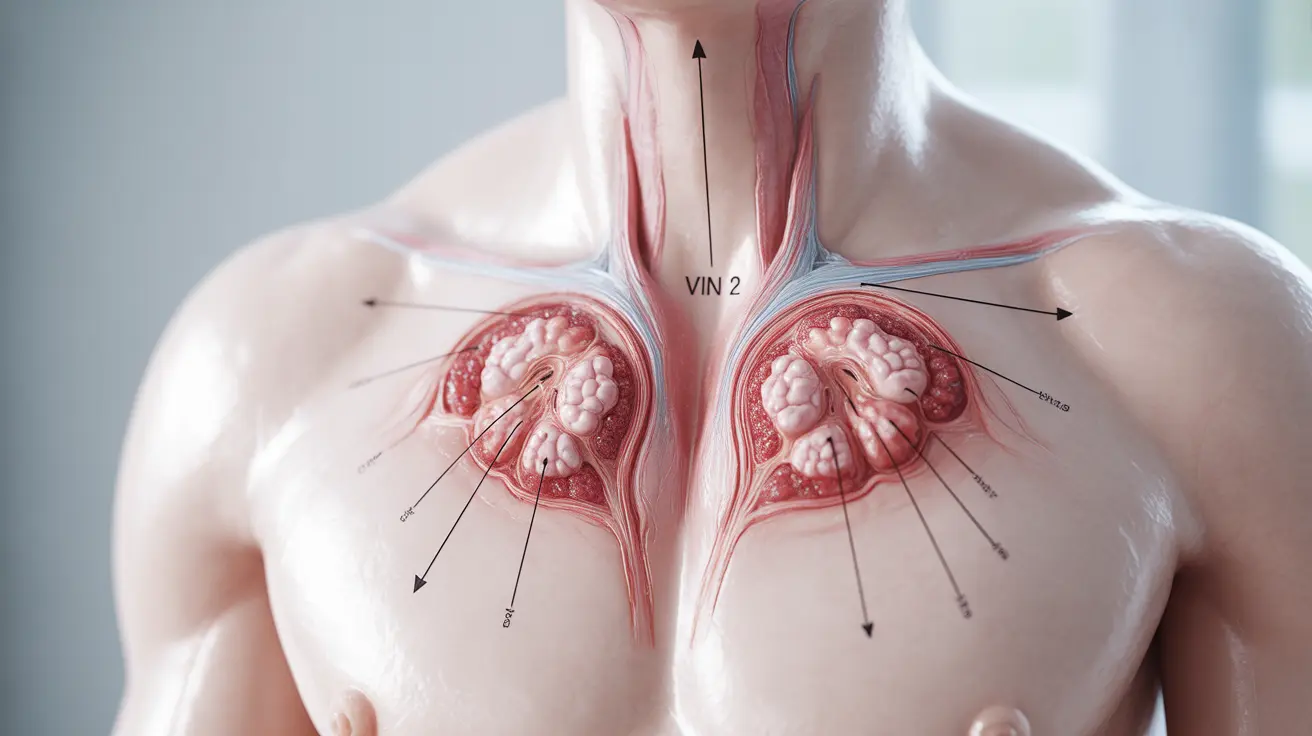Vulvar intraepithelial neoplasia 2 (VIN 2) is a precancerous condition affecting the vulvar tissue. This condition requires careful medical attention and understanding, as it represents moderate changes in vulvar cells that could potentially progress if left untreated. Early detection and proper management are crucial for optimal outcomes.
This comprehensive guide will explore the essential aspects of VIN 2, including its symptoms, causes, diagnosis, and treatment options, helping you better understand this condition and its implications for women's health.
Understanding VIN 2 and Its Significance
VIN 2 represents moderate dysplasia, or abnormal cell growth, in the vulvar tissue. This condition is part of a spectrum of vulvar intraepithelial neoplasia, where cells show precancerous changes but haven't yet invaded deeper tissues. Understanding VIN 2 is crucial because early intervention can prevent progression to more serious conditions.
Common Symptoms and Signs
VIN 2 can present with various symptoms, though some women may be asymptomatic. Common signs include:
- Itching or burning in the vulvar area
- Redness or discoloration
- Raised areas or lesions on the vulva
- Tenderness or pain
- Changes in skin texture
- Persistent irritation
It's important to note that these symptoms can also indicate other conditions, making professional medical evaluation essential for accurate diagnosis.
Causes and Risk Factors
The primary cause of VIN 2 is typically related to human papillomavirus (HPV) infection, particularly high-risk strains. Several factors can increase the risk of developing VIN 2:
- History of HPV infection
- Weakened immune system
- Smoking
- Previous abnormal Pap smears
- Age (most common in women between 30-50)
- Chronic vulvar inflammation
Diagnosis Process
Diagnosing VIN 2 involves several steps and medical procedures:
Physical Examination
Your healthcare provider will perform a thorough examination of the vulvar area, looking for visible changes or abnormalities.
Vulvar Biopsy
A small tissue sample is taken from any suspicious areas for microscopic examination. This is the definitive way to diagnose VIN 2 and determine its severity.
Additional Testing
Your healthcare provider may recommend:
- Colposcopy of the vulva
- HPV testing
- Screening for other sexually transmitted infections
Treatment Approaches
Treatment for VIN 2 varies depending on several factors, including the extent of the condition, symptoms, and individual patient circumstances. Common treatment options include:
Medical Treatments
- Topical medications (such as imiquimod)
- Laser therapy
- Surgical excision
- Cryotherapy
Follow-up Care
Regular monitoring and follow-up appointments are essential to ensure treatment effectiveness and prevent recurrence. Your healthcare provider will establish an appropriate follow-up schedule based on your specific situation.
Prevention and Risk Reduction
Several strategies can help reduce the risk of developing VIN 2 or its progression:
- HPV vaccination
- Regular gynecological check-ups
- Practicing safe sex
- Quitting smoking
- Maintaining a strong immune system
Frequently Asked Questions
What are the common symptoms of vulvar intraepithelial neoplasia 2 (VIN 2)? VIN 2 commonly presents with itching, burning, redness, raised areas on the vulva, and changes in skin texture. However, some women may not experience any symptoms.
What causes VIN 2 and how is it linked to HPV infection? VIN 2 is primarily caused by high-risk HPV infections. The virus can cause abnormal cell growth in vulvar tissue, leading to precancerous changes. Risk factors include weakened immunity and smoking.
How is VIN 2 diagnosed and what tests are involved? Diagnosis involves physical examination, vulvar biopsy, and possibly colposcopy. The biopsy is crucial for confirming the diagnosis and determining the extent of cell changes.
What are the treatment options available for VIN 2? Treatment options include topical medications, laser therapy, surgical excision, and cryotherapy. The choice of treatment depends on factors such as lesion size, location, and patient preferences.
Can VIN 2 progress to vulvar cancer and how can this risk be reduced? Yes, VIN 2 can potentially progress to vulvar cancer if left untreated. The risk can be reduced through early detection, appropriate treatment, regular follow-up care, HPV vaccination, and lifestyle modifications like smoking cessation.




